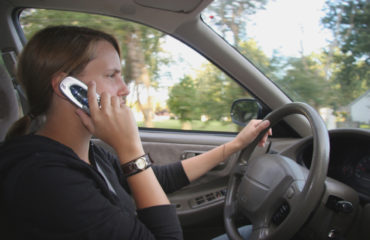Unfortunately, distracted driving is not a passing fad. It has become a trend with deadly, real consequences. With April as Distracted Driving Awareness Month, here are 3 tips for your and your family’s safety.
Distracted Driving’s Deadly Consequences
For anyone who thinks they can talk on their phone, text, apply make-up, or do any other distracting activity while driving, it’s time for a crash course in reality from the National Highway Traffic Safety Administration (NHTSA):
- In 2013, 3,154 people were killed and approximately 424,000 were injured in motor vehicle crashes involving a distracted driver. (NHTSA)
- Drivers who use hand-held devices are four times as likely to be involved in a serious crash. (Insurance Institute for Highway Safety)
- In 2013, ten percent of fatal crashes, 18 percent of injury crashes, and 16 percent of all motor vehicle traffic crashes in 2013 were reported as distraction-affected crashes. (NHTSA)
- In 2013, ten percent of all drivers 15-19 years old involved in fatal crashes were reported as distracted at the time of the crashes. This age group has the largest proportion of drivers who were distracted.
While those numbers may sound like just statistics, they’re anything but. They could be parents, children, neighbors and friends from right in your own community. There are too many sad tales of deaths and injuries that could have been prevented had drivers been paying attention to the road instead of someone or something else.
Focus on the Road
So, why do so many people participate in this dangerous behavior? With more technology now than ever, driver distractions have risen to unprecedented levels. We live in a world where people expect instant, real-time information 24 hours a day, and those expectations don’t stop just because someone gets behind the wheel. Drivers still do not realize – or choose to ignore – the danger they create when they take their eyes off the road, their hands off the wheel, and their focus off driving.
People often say, “I can do two things at once. I’ve memorized where the numbers are on my phone, so I don’t have to look.” Or, “Sending or reading one text is pretty quick – that should be okay.” They couldn’t be more wrong. Multi-tasking is a myth, human brains are not able to do more than one thing at a time.
For those who think they can do two things at once, think about this: According to a 2014 special article in the New England Journal of Medicine, the risk of a crash or near-crash among novice drivers increased with the performance of many secondary tasks, including texting and dialing cell phones. Driving is an activity that requires your full attention and focus in order to keep yourself and others safe.
What Can You Do?
I attended a distracted driving summit last year and one of the speakers had a very poignant question—“We can turn our cell phones off in a movie theater, why not when we’re driving?” We can turn it off when we are watching a movie for entertainment, but when doing one of the most dangerous activities we do on a regular basis, one that puts others and ourselves at risk, we can’t? It is time to change that dynamic and you can be the one to lead the charge.
First and foremost, when you are in the driver’s seat, the most important thing you can do is focus on the driving.
Second, to ensure that focus, turn the phone off and put it down. Admittedly, even just putting the phone down can be difficult for us. In such a short time, we have become almost wired to our phones.
So, third, when you get in the car, don’t just put your phone down, put it somewhere where you cannot reach it while driving. Make it your mission to be a safer driver before you even get into the car.
While distracted driving is an international problem, it affects you right in your own community. No one is immune from the dangers of distracted driving. So please remember: One text or call could wreck it all.







